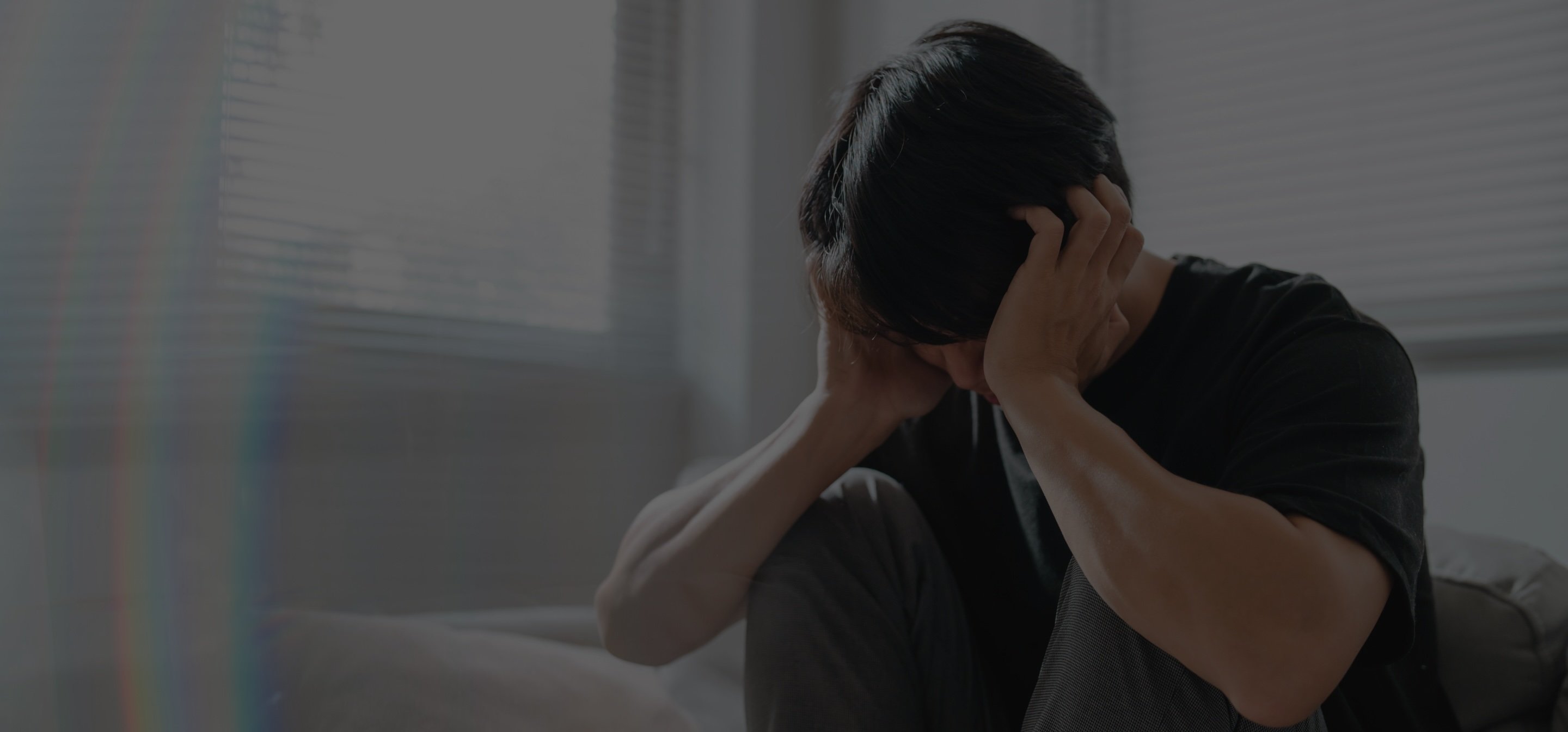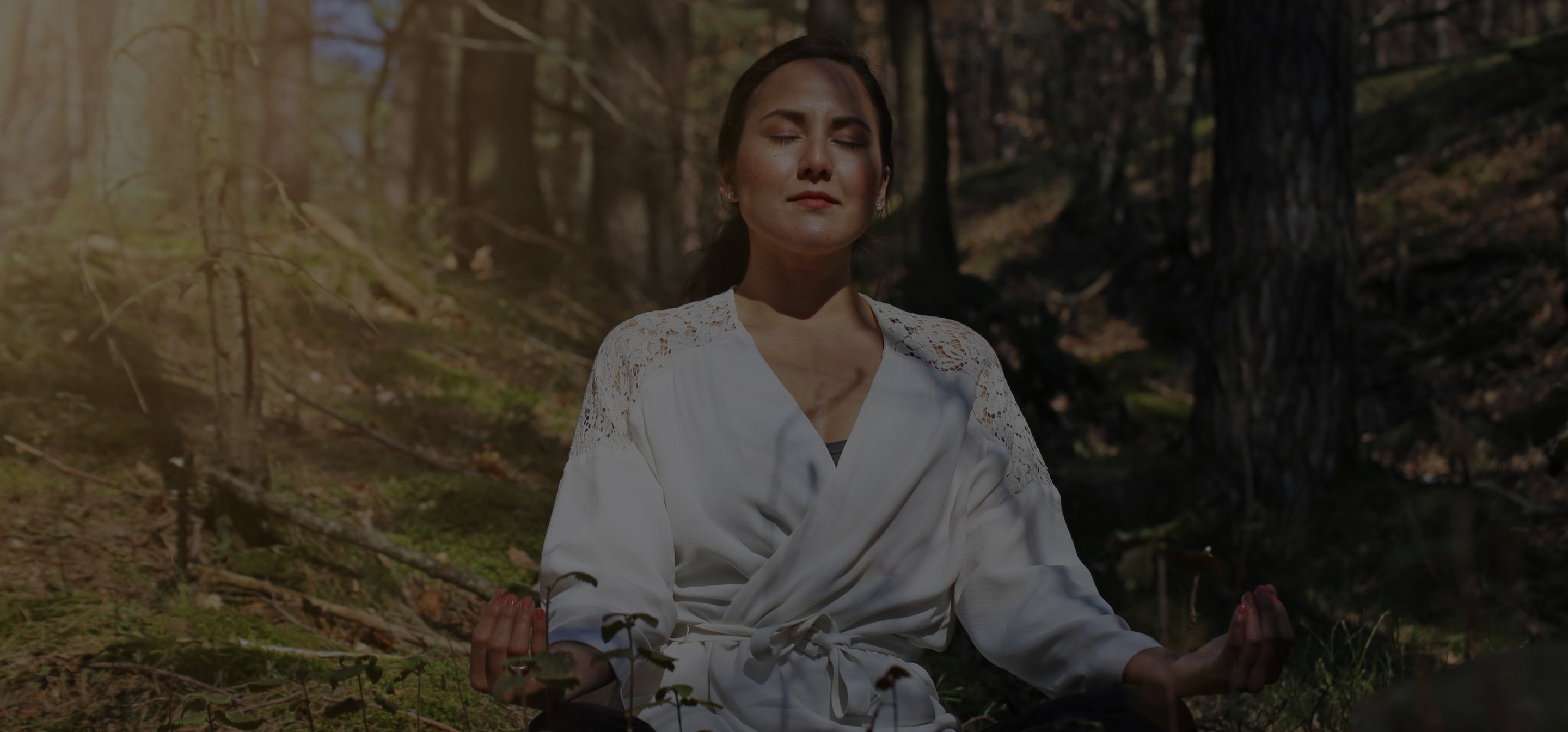Anxiety is a common mental health issue that affects millions of people worldwide. It can manifest in a variety of ways, including physical symptoms such as sweating, heart palpitations, and shortness of breath, as well as mental symptoms like excessive worry, fear, and panic attacks. While anxiety can feel overwhelming and may require support to manage, there are many coping exercises for anxiety relief to help alleviate symptoms and promote a sense of calmness and relaxation.
Understanding Anxiety and Its Effects
What is Anxiety?
At its root, anxiety is a natural response to stress or danger. It is a feeling of fear, apprehension, and worry that can be triggered by a variety of factors. These factors include work-related stress, financial worries, health concerns, and relationship problems. Anxiety can be a normal and even healthy response to stress, but when it persists for long periods of time or at extreme levels, it can negatively affect both physical and mental health. That’s where coping exercises, therapy, and treatment come in.
It is important to note that anxiety is different from fear. Fear is a response to a specific, immediate threat, while anxiety is a response to an uncertain or unknown situation. Anxiety can be a normal response to stress, but when it becomes excessive or irrational, it can interfere with daily life.
Physical and Mental Symptoms of Anxiety
Physical symptoms of anxiety can include increased heart rate, sweating, muscle tension, and irritability. These symptoms are part of the body’s natural “fight or flight” response to stress. When the body perceives a threat, it releases stress hormones such as adrenaline and cortisol, which can cause physical symptoms.
Mental symptoms of anxiety may include excessive worry, fear, panic attacks, and difficulty concentrating on tasks. Anxiety can also cause sleep disturbances and fatigue. If left unmanaged, these symptoms can potentially worsen over time.
How Anxiety Affects Daily Life
The effects of anxiety can spill over into many areas of life, including work, social interactions, personal relationships, and physical health.
Individuals with anxiety may also experience social isolation because of a pull to avoid situations that trigger their anxiety or even to avoid stigma or shame. This can lead to a decreased quality of life and can make it difficult to maintain personal relationships.
Anxiety can also affect physical health. Chronic anxiety can cause the body to release stress hormones over long periods of time, which can lead to health problems such as high blood pressure, heart disease, and digestive issues.
It is important to seek treatment for anxiety if it is interfering with daily life. Treatment options may include therapy, medication, and lifestyle changes such as exercise and stress management techniques.
The Importance of Coping Strategies
Life can be challenging, and we all face difficult situations and experiences that can be overwhelming. Coping strategies are essential tools that can help us navigate through these tough times. Coping strategies are the ways in which we deal with stress, anxiety, and other emotional challenges that we face in our daily lives.
Benefits of Effective Coping Techniques
Research has shown that effective coping strategies can significantly reduce or even eliminate the symptoms of anxiety. Coping strategies can help individuals take control of their thoughts and emotions, promote relaxation, and promote feelings of well-being and self-confidence. Effective coping strategies can also help individuals build resilience, which is the ability to bounce back from adversity.
One of the most significant benefits of effective coping strategies is that they can improve our overall quality of life. When we learn how to cope with stress and anxiety, we can experience greater happiness, better relationships, and improved physical health.
Developing a Personalized Coping Plan
Effective coping strategies can vary from person to person. Therefore, it is important to develop a personalized coping plan that works best for your individual needs. This can include a combination of different techniques such as exercise, mindfulness, and deep breathing exercises. A licensed therapist, social worker, or psychiatrist can help you evaluate your personal mental health challenges and goals to create the best plan for you. In the meantime, some of the coping mechanisms below may help you breathe a little easier.
When developing your personalized coping plan, consider your own unique strengths, weaknesses, habits, and preferences. For example, if you enjoy spending time outdoors, you might incorporate nature walks or hikes into your coping plan. If you prefer quiet activities, you might include meditation or yoga.
It is also important to seek support from others when developing your coping plan. This can include talking to friends, family members, or mental health professionals. They can provide valuable insight and support as you work to develop a plan that works best for you.
In conclusion, coping strategies are essential tools that can help us navigate through life’s challenges. By developing a personalized coping plan and incorporating effective coping techniques into our daily lives, we can improve our overall well-being and build resilience to face whatever challenges come our way.
Exercise 1: Deep Breathing Techniques for Anxiety
How Deep Breathing Helps With Anxiety
Deep breathing exercises can help reduce the symptoms of anxiety by relaxing the body and mind. Deep breathing promotes increased oxygen flow to the brain, which can improve focus and clarity of thought.
Anxiety is a common mental health condition that affects millions of people worldwide. It can cause feelings of unease, worry, and fear, which can be overwhelming and interfere with daily life. Deep breathing exercises are a simple and effective way to manage anxiety symptoms in the moment and promote relaxation.
Step-by-Step Guide to Box Breathing
To perform deep breathing exercises, start by finding a quiet, comfortable place to sit or lie down. Make sure that you are wearing comfortable clothing and that you are not wearing anything that is too tight or restrictive. This will help you to feel more relaxed and comfortable during the exercise.
One simple breathing exercise for anxiety is box breathing (also called four-square breathing). Place one hand on your chest and the other on your stomach. This will help you to monitor your breathing and ensure that you are breathing deeply and correctly. Inhale slowly through your nose, counting to four as you do so. Hold this breath for four seconds before exhaling slowly through your mouth for another count of four. Hold for another slow count of four before starting again with a slow inhale. Repeat this breathing cycle again and again, focusing on the sensation of your breath moving in and out of your body rather than anxious thoughts or other sensations.
As you continue to breathe deeply, you may notice that your body begins to feel more relaxed and calm. This is because deep breathing activates the body’s relaxation response, which helps to reduce stress and tension. You may also notice that your mind feels clearer and more focused, as deep breathing promotes increased oxygen flow to the brain.
Deep breathing exercises can be practiced at any time of day and in any location. They are a simple and effective way to manage anxiety symptoms and promote relaxation. With regular practice, deep breathing can become a natural and automatic response to stress and anxiety, helping you to feel more calm and centered in your daily life. Be patient with yourself. It’s alright if your mind wanders or it takes awhile to calm. You’re working to reset an activated or triggered nervous system, so having grace with yourself during distractions and imperfections will help prevent the anxiety from rising more.
Exercise 2: Progressive Muscle Relaxation for Anxiety
The Science Behind Muscle Relaxation
Progressive muscle relaxation is a technique that involves slowly tensing and then relaxing each muscle group in your body. This technique is effective because it can help reduce muscle tension, which can be a common symptom of anxiety. When you are stressed or anxious, your body may hold onto tension in the form of muscle tightness. This tension can cause discomfort, pain, and even affect your posture. By using progressive muscle relaxation, you can release the tension in your muscles and promote relaxation throughout your entire body.
Practicing Progressive Muscle Relaxation
To perform progressive muscle relaxation, find a quiet, comfortable place to sit or lie down. Make sure you won’t be disturbed during the exercise. Start at your toes and gradually work your way up your body, spending a few seconds tensing and relaxing each muscle group. Begin by curling your toes and holding the tension for a few seconds before releasing. Then, move up to your feet, tensing and relaxing the muscles in your feet and ankles. Continue moving up your body, tensing and relaxing your calves, thighs, buttocks, abdomen, chest, arms, and finally your face and scalp.
As you work your way through each muscle group, pay attention to the sensation of tension and relaxation in each muscle group. Notice how it feels when you tense your muscles and how it feels when you release the tension. Try to focus on the feeling of relaxation as much as possible. As you relax each muscle group, imagine the tension melting away and the muscles becoming loose and limp. You may find that your mind begins to quiet and your breathing slows down as your body becomes more relaxed.
Some people find it helpful to use a guided meditation or audio recording to help them through the exercise. You can find many different options online, including ones specifically designed for progressive muscle relaxation. With practice, you may find that you are able to use this technique to reduce muscle tension and promote relaxation whenever you need it. Again, have patience with yourself. If this isn’t an exercise that helps you, it’s okay! There are plenty of other coping mechanisms for anxiety that may feel more fitting.
Exercise 3: Mindfulness Meditation for Anxiety
The Basics of Mindfulness
Mindfulness is the practice of being present in the moment and observing your thoughts and emotions without judgment. This technique can be effective in reducing symptoms of anxiety because it can help promote a sense of calmness and acceptance.
When practicing mindfulness, it is important to remember that it is not about trying to stop your thoughts or emotions from arising. Rather, it is about acknowledging them and then letting them pass by, like clouds in the sky. By doing so, you can learn to become more aware of your own patterns of thinking and feeling, and develop greater control over your responses to stress and anxiety.
Incorporating Mindfulness Into Your Daily Routine
To incorporate mindfulness into your daily routine, you might try setting aside a few minutes each day to sit quietly and focus on your breath. You can also try incorporating mindfulness into other activities, such as walking or eating. For example, when you are walking, try to focus on the sensation of your feet touching the ground, or the feeling of the wind on your skin. When you are eating, try to focus on the taste and texture of your food, and the sensations in your mouth and throat.
Another way to incorporate mindfulness into your daily routine is to use guided meditations or mindfulness apps, like Calm or Headspace. These can provide a helpful structure for your practice, and can also help you to stay motivated and engaged over time.
Remember, mindfulness is a skill that takes time and practice to develop. Be patient with yourself, and try to approach your practice with an open and curious mindset. Over time, you may find that mindfulness becomes a natural part of your daily routine, and that it helps you to feel more calm, centered, and present in your life.
Exercise 4: Visualization Techniques for Anxiety
The Power of Mental Imagery
Visualization is a powerful technique that can help improve your mental and emotional well-being. It involves creating mental images of calming or peaceful scenes that can help reduce symptoms of anxiety and promote feelings of relaxation and calmness. Visualization can also be used to help you achieve your goals, by visualizing yourself successfully completing the task or achieving the desired outcome.
Research has shown that visualization can have a positive impact on both your physical and mental health. It can help reduce stress, lower blood pressure, and improve your mood. Visualization can also be used to help manage chronic pain, by visualizing yourself in a comfortable and relaxed state.
Creating Your Own Visualization Practice
If you’re interested in practicing visualization, it’s important to find a quiet and comfortable place where you won’t be interrupted. You can sit or lie down, whatever feels most comfortable for you. Close your eyes and take a few deep breaths to help you relax.
Once you’re feeling calm and relaxed, start to visualize a calming scene in your mind. This could be a peaceful beach, a quiet forest, or any other scene that makes you feel relaxed and happy. Try to visualize the details of this scene as vividly as possible, using all of your senses to fully immerse yourself in the experience.
For example, if you’re visualizing a beach, imagine the sound of the waves crashing against the shore, the feel of the warm sand between your toes, and the smell of the salty ocean air. The more vividly you can imagine these details, the more effective the visualization will be.
Try to spend a few minutes each day practicing visualization, gradually working up to longer sessions over time. You can also experiment with different scenes and visualization techniques to find what works best for you.
Remember, visualization is a skill that takes practice to master. It may take some time before you start to see the benefits, but with regular practice, you can harness the power of mental imagery to improve your well-being and achieve your goals.
It may be helpful and more realistic for you to identify your own personal “happy place” to use as a visualization that you can come back to over and over again. Perhaps it’s a vacation spot where you can easily visualize yourself feeling at peace. When stress and anxiety starts to rise, immerse yourself in the visualization of your happy place – sights, sounds, feelings, and all.
Exercise 5: Journaling for Anxiety Relief
The Benefits of Writing About Your Feelings
Journaling is a technique that involves writing down your thoughts and emotions. This practice can be effective for reducing symptoms of anxiety because it can help individuals process and understand their feelings in a healthy way.
Tips for Effective Journaling
To practice journaling, set aside a few minutes each day to write down your thoughts and feelings. Try to be as honest and open as possible, without censoring or judging yourself. You can also use journaling prompts to guide your writing and generate new ideas. Some people find that journaling in a similar way to their speaking patterns is most helpful for getting their worries out of their brains and onto paper. Others prefer bullet journaling to move more quickly through key ideas without lingering in the thought for as long. Try a few different journaling methods for anxiety relief to see what feels most helpful for you.
Exercise 6: Physical Activity and Exercise for Anxiety Relief
How Exercise Reduces Anxiety
Regular exercise can be effective for reducing symptoms of anxiety because it promotes the release of endorphins, which are natural chemicals that promote feelings of positivity and well-being.
Choosing the Right Exercise for You
When choosing an exercise program, consider your individual needs and preferences. For example, some individuals may prefer more gentle forms of exercise such as yoga or pilates, while others may prefer more intense activities such as running or weightlifting. Find an exercise routine that you enjoy and can stick to over the long term. Try starting with easy-to-achieve exercise goals that require just a small change in your habits at first to prevent any overwhelm. And remember, the goal here is not perfection, it’s developing a practice to support your overall well-being. So waves of consistency and inconsistency are expected. Give yourself grace as you begin a new habit.
Exercise 7: Social Support and Connection for Anxiety Relief
The Importance of Social Interaction
Strong social connections can be effective in reducing symptoms of anxiety because they promote feelings of support, belonging, and even purpose. Having people to lift you up when you’re feeling low, sit with you in the struggle, and speak truth into the lies your feelings sometimes tell you is invaluable in the healing process and in your ability to tolerate discomfort when it comes.
Building a Support Network
To build a support network, consider reaching out to friends and family members, joining a support group, or seeking professional counseling. This may mean finding a religious community; joining a 12-step group like AA, Alanon, or CODA; finding a local book club or hiking group; or reaching out to volunteer for a cause that resonates with you. Strive to maintain positive, healthy relationships that promote feelings of connection and support. Vulnerability with safe people can make a huge difference in offering hope rather than isolation.
Maintaining Your Coping Strategies
Tracking Your Progress
To maintain your coping strategies over the long term, consider tracking your progress and making adjustments as needed. Keep a record of your coping techniques and how they make you feel, adjusting them as necessary to suit your individual needs. There are enormous amounts of tracking apps for your phone that can help gamify your habit-tracking to make it more fun.
Adjusting Your Coping Techniques as Needed
If you find that a particular coping technique is not working for you, don’t be afraid to try something new. Experiment with different techniques until you find the ones that work best for your individual needs.
Seeking Professional Help if Necessary
If you find that your anxiety symptoms persist despite your best efforts to manage them, consider seeking professional help from a mental health provider. A professional can work with you to develop an effective treatment plan that meets your individual needs.
Overall, the coping exercises outlined in this article can be effective for reducing symptoms of anxiety and promoting a sense of calmness and relaxation. However, it is important to remember that coping strategies can be highly individual, and what works for one person may not work for another. Therefore, it is important to experiment with different techniques and find the ones that work best for your individual needs.
Ready for your next step to start therapy or even residential treatment for anxiety? Our warm, experienced team at APN is accepting new clients. Reach out today to see how we can help.





